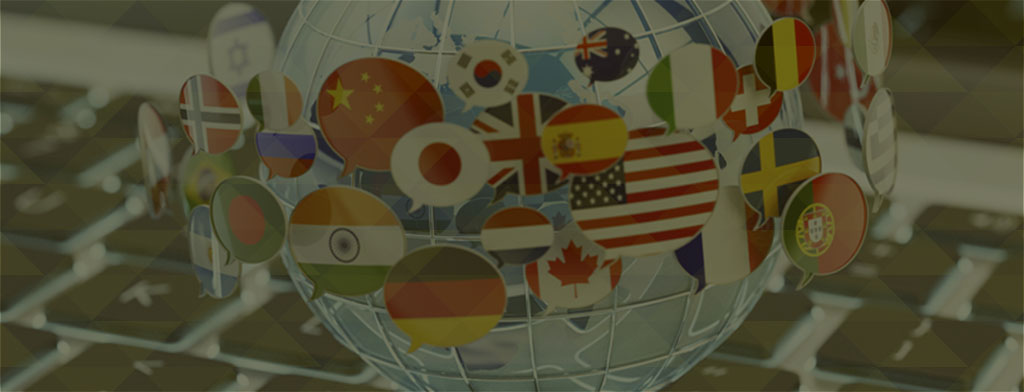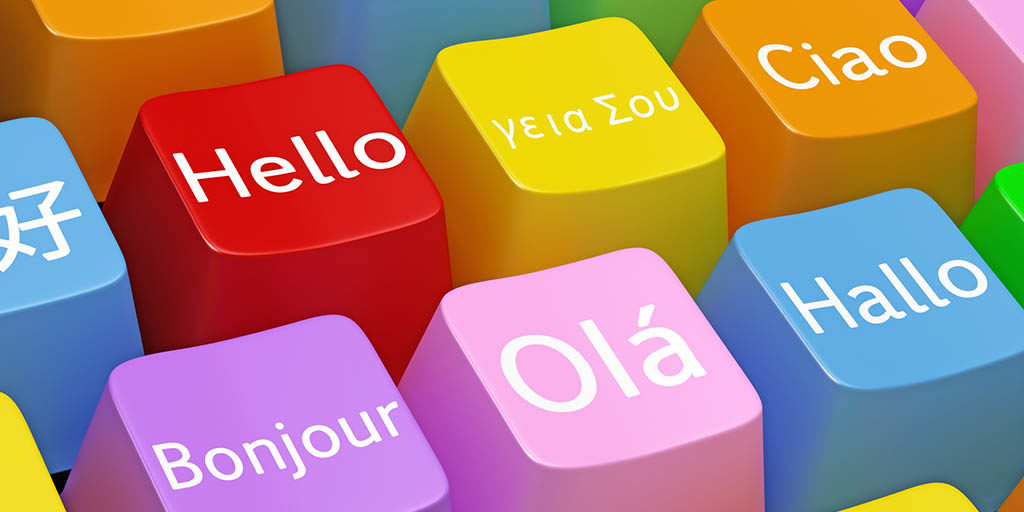The Language of Localization
Interview with Kit Brown-Hoekstra, Owner and Principal, Comgenesis
Simon Hodgkins, Editor in Chief, VTQ
The book “The Language of Localization” is the 3rd book in the series and gathers experts from around the world to discuss core concepts in localization. What motivated you to get involved with the book?
As I was writing my contributions for The Language of Technical Communication and The Language of Business Storytelling, it occurred to me that we needed something similar for Localization, so I talked to Scott Abel and Richard Hamilton, and they agreed.
What’s your favorite aspect of the Localization industry?
I love that I get to meet and work with so many intelligent, interesting people who care deeply about the world we live in. These connections we have across cultural, linguistic, and geopolitical boundaries create community and that fosters collaboration. These bonds can be a powerful force of good in the world.
I also love that localization, like technical communication affects every product, process, and service on this planet (and if you count the International Space Station, off of it). This breadth allows me to satisfy my curiosity about life, the universe, and everything — and I get paid for it.
How did you work with so many contributors?
Luckily, I knew most of the contributors at least peripherally before we started, so it was easy to establish a rapport. Those I didn’t know personally were recommended by someone I knew, and it was fun getting to know them.
From a project management perspective, Google spreadsheets and regular emails were my friend. Keeping track of 52 contributors, plus making sure that I was meeting the publisher’s requirements, would have been challenging without these tools.
We also used a wiki to make it easier to collect contributions in one place. Don Day (one of the founders of DITA) created an interface so that the contributors just needed to know how to type in a web form. They didn’t need to know DITA or wiki tags. This was critical because we have contributors from all over the world and with varying degrees of knowledge of wikis and DITA.
The wiki allowed us to gather the content into a central location where everyone could view it. Using DITA made it easy to do multi-channel publishing at the touch of a button.
What processes did you go through to edit the book and to define the terms in localization?
I put together the list of terms based on my experiences of working with clients and teaching technical communicators about localization. Then, we refined it based on feedback from the contributors. We cheated a little by having the appendices at the end that covered important concepts that just didn’t fit in the main part of the book.
One of the best things about working with people who are professional communicators and translators is that most of them are good writers. The hardest part for most of them was the 250-word limit for the essay.
My job as editor was to assist the contributors in communicating their ideas as clearly and concisely as possible, while making sure we covered some key ideas consistently. It was important to me that their personalities and voices came through, while maintaining a consistent structure.
In each case, I reviewed their drafts and sent comments back to them. In some cases, the contributor and I discussed how to approach a complex or challenging concept, or what the trends might be around a topic. When contributors were working on related terms, I introduced them to each other and requested that they discuss their terms and ensure some consistency (particularly important when there were professional disagreements).
In addition, we reused twelve terms from the other Language of … books, so I worked with those contributors to make sure that the definitions, descriptions, essays, and examples were relevant to localization.
What’s the first thing you would tell professionals about the localization industry if they were unfamiliar with it?
That the localization industry is ubiquitous, and one of the largest industries that few people know about. One of the reasons for this is that localization and technical communication are part of the infrastructure — no one notices the documentation or translation unless they are wrong. But, without them, companies could not sell their products or services, governments couldn’t run, and things would generally start to fall apart.
I also like to give examples from a common frame of reference. Most people know what a hair dryer is and use one. So, I talk about the packaging, content, and configuration associated with a hair dryer to explain how each of those things gets modified when the hair dryer is sold in a different locale.
This kind of example helps people understand conceptually what’s involved.
How do you see localization impacting industry in the future?
Ironically, as customers have become more globally aware, the need for localization has increased exponentially. Customers demand local language products that are available everywhere at the same time (simship). Companies are under pressure to deliver more content and products faster, while controlling costs. This is driving the development of automation, process and project management tools that support localization.
As machine translation matures, we will see more technology to support on-demand, real-time translations that, while not perfect, are good enough for the context. For example, just today I saw an ad for a wearable “universal translator” (https://www.indiegogo.com/projects/meet-the-pilot-smartearpiece-language-translator-headphones-travel#/).
This trend has implications for both our clients and the localization industry. As a result, the role of a human translator is evolving.
As these technologies facilitate communication in the global marketplace, they also force companies to build global readiness into their product designs, and we will see a blurring of the lines between content creation, localization, and transcreation. In some areas, we will see harmonization of standards, improved consistency, and a break-down in barriers. Better communication and understanding lead to more collaboration and idea-sharing, which lead to innovation and optimization. (Yes, I believe in the Star Trek vision of the future!)
You run a company called Comgenesis. Can you tell us about what your company does?
We assist our clients in building global content and localization strategies so that they can connect more effectively with their customers, wherever those customers live and work. As part of our engagement, we provide consulting and training, as well as more traditional content creation services.
What is your advice for building an effective localization strategy?
To be successful, you need:
- Management buy-in and an executive champion.
- Knowledge of the corporate strategic plan and globalization plan (so you know which markets to focus on).
- Solid content creation processes (especially change management and QA). Localization is a garbage-in-garbage-out process, so the source needs to be as clean as possible.
- A good partnership with your localization vendor.
- Knowledge of where you are (baseline) and where you need to be so that you can build a roadmap (content and process audits can help you define this).
- Understanding of the pain points in the local market (to identify quick wins).
- Pilot projects you can use to test your strategy and implementation plan.
- Metrics and ROI requirements.
How can companies work more effectively when it comes to content and localization?
Surprisingly, localization is still a black box for many companies (even large ones). The content team sends their work off to localization, magic occurs, and they get back the translated versions. In these companies, the content creators have little understanding of how their processes and content affect localization costs and effectiveness.
Once we open the box and show them what’s inside, it’s amazing how quickly they can see results. Often, minor changes in the source content process or product design process can have huge positive effects on localization.
One of my favorite examples is text in graphics. Assume, for example, that it costs you US$50 to create that graphic, you have 100 graphics, and are translating into 20 languages.
If your text is embedded in that graphic, the localization team has to manually translate the text in that graphic and possibly redesign the graphic to accommodate text expansion. And, the text is not captured in the translation memory. Those US$50 graphics are costing you US$5,000 for the original, multiplied by the 20 languages (US$100,000).
Another way to work more effectively with localization is to pull them upstream in the process. Build a relationship with your vendor and bring them in early in the cycle.
Better yet, when you have a major initiative in content creation (e.g., moving to structured content and/or a content management system), count them as a stakeholder and bring them in early to review your architecture, templates, workflow, etc. Learn their pain points with your content and then work to resolve them.
Bring localization into the terminology management initiatives as well. Include your in-country reviewers in this process.
Doing so will get you a more effective and efficient process, will improve your translations, and will create buy-in with your in-country reviewers.
You have co-authored the book “Managing Virtual Teams: Getting the Most from Wikis, Blogs, and Other Collaborative Tools”. Can you share some tips on working effectively with virtual teams?
It’s so easy to work virtually now because of all the tools we have that support it. However, no technology in the world will solve the people problems on your team. And, when you have issues on a virtual team, they tend to blow up faster.
Here are some ways to be successful:
- Take the time to establish rapport with your teammates.
- Be proactive. No news is not good news when working virtually.
- Make sure everyone on the team has equal access to the technology, tools, and support.
- As a manager, your job is to remove barriers and to facilitate communication, so establish clear expectations and guidelines. Model the behavior you want to see.
- Budget for at least one face-to-face meeting, especially at project kickoff. It helps break down communication barriers and builds rapport.
- With multicultural teams, where some members are non-native speakers of your company’s business language, take time during the kickoff to work together to establish team collaboration guidelines. This helps establish a team culture and clarifies expectations.
- Be clear and explicit in your communication. Follow up phone calls with a summary email (especially with multicultural teams where English isn’t their first language). Whenever possible, use a web cam to facilitate understanding.
- Set up a separate workspace in your home, and establish a routine so that you don’t get distracted.
Do you have plans to work on another book and what is next on the horizon?
Yes! I have several books floating around in my head, as well as ideas for some online courses and workshops, and maybe an app. In 2018, I plan to launch at least one online course, speak at a couple of conferences, and continue my consulting and training work.
Katherine (Kit) Brown-Hoekstra is a Fellow of the Society for Technical Communication (STC), former STC Society President, and a member of the Colorado State University Media Hall of Fame. She is an experienced consultant with over 25 years of experience in technical communication and localization. As Principal of Comgenesis, LLC, Kit provides consulting and training to her clients on a variety of topics, including localization, content strategy, and content management. She speaks at conferences worldwide and publishes regularly in industry magazines. www.pangaeapapers.com
This article first appeared in VTQ Magazine.
Read more: https://vtqglobal.com/



